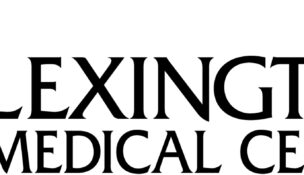Pandemic could complicate employee benefits picture
Melinda Waldrop //November 3, 2020//
Shelli Quenga quickly found out that her organization’s groundbreaking brainstorm was going to require a lot of work.
Three years later, some things have changed, but the work remains constant — and rewarding.
Quenga, director of programs for state social and economic agency Palmetto Project, added another title in 2018: principal of the organization’s nonprofit insurance agency. One of just two such entities in the country at the time, the agency evolved from the Palmetto Project’s previous role as a navigator for Affordable Care Act Marketplace plans and has taken on even more responsibility as pandemic-fueled unemployment has created a growing pool of people without employer-funded insurance.
“We’re in our 35th year now at Palmetto Project, and for more than 20 of those, we’ve been working on health care access issues,” Quenga said. “We had started helping people with Medicaid in the beginning, and then when the ACA was passed and they outlined how people could get in-person assistance, we ended up becoming navigators for the Affordable Care Act, and so that allowed us to help people with Marketplace plans, and with Medicaid.
“Those grant funds were slashed by the current administration, and so we could not continue to do the amount of work that was being requested for the amount of money that was being offered. We decided not to apply for future funding and instead to set up a nonprofit insurance agency.”
In March 2020, Quenga and her staff were preparing to take a breath from the most recent open enrollment season. The switch to nonprofit status had made that time even more hectic, as it meant the Palmetto Project had added the “complicated and convoluted process” of Medicare assistance to its list of services.
Then the phones began ringing with an unusual but repeated request as unemployment soared to 12.1% in the state in April.
“We started getting phone calls from other community organizations saying, ‘Do you know anybody who helps people with unemployment applications?’ ” Quenga said.
With in-person visits to unemployment offices nixed as the COVID-19 pandemic closed government buildings and folks finding the online application process hard to use on their cell phones, the Palmetto Project found itself facing a new challenge.
“We started helping people with unemployment applications in March, and in the first week of helping people, we helped 600 people with our staff of five folks,” Quenga said. “That connected us with a lot more folks who had lost jobs and then had lost coverage. Most of those folks at the time, though, weren’t really ready to talk about insurance, because they either thought it (the pandemic) was going to be short-lived, they’d be able to get back to work pretty quickly, or they just couldn’t even think about spending any extra money or any extra effort in thinking about insurance when they were worried about food on the table and rent and utilities.
“So we are talking to more of those people now who are dealing with long-term unemployment, having to stay home with kids who are not back in school full-time, or having elderly family members that they need to care for, or all of those variant situations that have come up because of the pandemic.”
Those who have held onto their jobs may still face new considerations, including contributing more to employer-funded health care. A recent study by insurance, risk management and consulting services firm Gallagher found that while few companies are planning to reduce benefits, employees may end up shouldering an increase in premium contributions or deductibles for the same level of coverage in 2021.
The study, which gathered data from 3,921 employers from December 2019 to May 2020 as well as from a series of employer pulse surveys from April until July, found that 63% of employers anticipated their health care expenses would either align with projections (40%) or be lower (23%) next year, largely because of avoidance of elective procedures. The study emphasized, though, that it remains unclear whether health insurers will reduce, maintain or increase premiums in 2021.
“There’s no question about it: COVID has certainly changed and continues to change the landscape,” said Rick Gantt, Gallagher South Carolina area president. “We work with employers all over the state, and when it hit back in March, I think within the first two weeks, we redid probably 5% of our employers’ budgets. Everybody started hitting the panic buttons.”
As those initial reactions leveled off, Gantt said South Carolina has seen, on average, more reductions in employer health care expenses than increases as employee recruitment and retainment remain priorities, even in a pandemic.
“I’ve seen some employers have reductions as high as 30%. Now that certainly isn’t the average, but I have seen a lot of reduction, especially in groups that self-insure their own programs, that think they’re large enough to take on more risk,” Gantt said. “All eyes are on every dime, but I also feel that employers are balancing that cost. The goal is still to attract and retain employees. It hasn’t automatically shifted in the last year. A year ago, that’s all we talked about. Employers really don’t want to massively change or cost-shift anything.”
Instead, Gantt said, employers are turning their focus inward, scrutinizing pharmaceutical and other contracts for crystal-clear language and optimum pricing as well as seeking out different medication purchasing options. Employers are also utilizing high-performing networks, which means sending employees to the best places research has identified to perform certain procedures, and direct primary care contracting.
“If they (employees) have a chronic risk, they’re managed better, so it’s well worth the energy and effort from a convenience perspective but also from a long-term cost control perspective,” Gantt said.
In that regard, he said, South Carolina has been, by necessity, an industry innovation leader because of the state’s high rates of chronic illnesses. For example, a 2019 S.C. Department of Health and Environmental Control study found that 1,581 residents died of diabetes. That represented the state’s seventh-leading cause of death. Heart disease ranked as South Carolina’s leading cause of death in 2018, claiming the lives of 10,460 residents, according to DHEC.
“We had to get involved in total employee population well-being sooner than other, healthier states, and I think it’s helped us along a little bit, especially in these times,” Gantt said. “There are a lot of employers in South Carolina that are doing exceptional work in trimming their costs and trying to get their populations healthier.”
While there may be cause for optimism, concerns remain. Quenga’s usual worries about helping low-income elderly folks find the appropriate resources and coverage have been joined by anxieties about those who have suddenly found themselves without employer-funded coverage.
Washington, D.C.-based health care nonprofit Families USA estimated that 20% of South Carolinians found themselves uninsured after the pandemic started “because so many of them had lost employer-sponsored coverage, in addition to the fact that we’re a state that has many people who work in industries that don’t offer coverage,” she said. “We’re largely driven by the hospitality and tourism industry, and so those are a lot of part-time workers who work more than one job and none of the jobs provide insurance. You put those kind of jobs together with a pandemic and it’s a recipe for disaster for folks who are trying to get access to care.”
Federal Marketplace regulations have relaxed during the pandemic, Quenga said, to allow those who have lost any coverage since Jan. 1 to enroll in a plan instead of the typical deadline of 60 days from a significant life change. She also pointed to federally qualified community health care centers that provide primary, pediatric and maternity care as a resource.
As Medicare annual enrollment and ACA open enrollment began in October, the Palmetto Project is also focused on providing nitty-gritty help such as printing and mailing applications to those who rely on still-closed libraries for internet access.
“Beyond just helping people get enrolled, we also help people understand what their coverage includes, why it’s important to have a medical home, why it’s important for you to get your preventative care benefits so that your doctor knows you when you’re well, not just when you’re sick, how those services could be covered at no cost thanks to the Affordable Care Act,” Quenga said. “We do work year-round anyway just making sure that people are utilizing all the coverage that they have available to them through purchase or through Medicaid.”
Along with the satisfaction of helping a wider swath of the population as a nonprofit insurance agency, Quenga said the Palmetto Project has also reaped the financial rewards of commission revenue from Marketplace and Medicare plans that is funneled back into the organization’s Medicaid work. That helps the Palmetto Project educate people, such as healthy, childless adults who may not be eligible for Medicaid in South Carolina or those who think ACA plans are not available in the state.
“Reach out and make a call and ask the questions,” said Quenga, emphasizing that local organizations can also provide more area-specific help than national call centers. “Just take a chance that you probably don’t have all the facts and reach out to someone who might and get all the information before you make a decision to go uninsured.”
r















